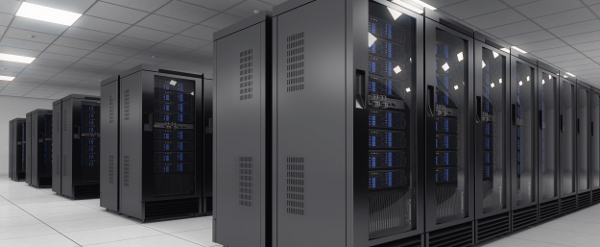
Rack based servers are still a big seller for customers who see blade technology as a "black art", Dell claimed upon the release of its new range of PowerEdge servers.
The tech giant’s new line of storage hardware encompasses tower, rack and blade running Intel’s Xeon Haswell processors, and targets new IT trends like BYOD, big data and cloud computing.
The firm aims to address application performance after its own survey of 800 IT pros found all believe optimising applications is of critical importance to their businesses.
But enterprise field marketing manager Stephen Daborn defended Dell’s decision to continue with rack alongside blade, despite industry experts seeing the latter as a more application-specific technology.
He told CBR: "There’s still a view that blade is a black art. You mention blades to some customers and they run away at a thousand miles an hour because they still see it as a very strange, mythical beast, but it really isn’t.
"It’s still one of those mindsets people are gradually getting over. We’re definitely seeing a large uptake on blade technology now it’s slowly becoming accepted."
He added that Dell is confident many customers will take up the PowerEdge rack release.
"It’s still one of our biggest selling lines of products," he claimed. "For hosting environments there are restrictions around power requirements per rack that the blade servers can demand, whereas rack-mount servers are just getting more and more energy efficient."
The PowerEdge 13 range include the PowerEdge R730xd, R730, and R630 rack servers, the M630 blade server, and the T630 tower server, which are claimed to boost application performance by moving storage closer to compute.
For instance, the R730 boasts 3.5 times more transactions and an 11-times faster response time for online transaction processing with Microsoft SQL databases.
The R630 (a rack server) offers 10.5-times faster application performance on a SQL database by caching data in SSDs.
Taking on HP
HP announced its new ProLiant Gen9 server range last week, and admitted it is targeting Windows Server 2003 migrations with its new series.
General manager for rack and tower, Peter Schrady, said the business was chasing $2bn in server revenue, targeting SMBs and enterprises by aiming to accelerate IT service delivery, reduce IT costs and cut down on energy usage.
But Dell’s Daborn said Dell would compete with its own unique selling points, rather than by flogging its similarly advanced new servers.
"With all of these servers and all of our market competition within this area we’re all going to be releasing the [Xeon] Haswell processors from Intel with new memory and everything so that’s not the real unique piece, it’s what we wrap around that," he said.
"It’s the management pieces we wrap around it and then the ability to support things like sdoftware-defined storage and those capaibilities that really take us away from the competition."
One such wrap-around is Dell’s Lifecycle Controller, now in its third generation, which Daborn sees as a sign Dell is now innovating, not following others’ leads.
"Dell is now leading the development rather than following the development [by others]," he said. "We’re first to market – our servers are available to order as of today and the competition may have announced theirs, but you may find you’re not able to order one yet. We’re ahead of the game."
IBM and Lenovo
However, HP currently leads the server market with a 25% share, according to an IDC survey of the second quarter this year.
Dell lags behind in third spot with a 17.6% share, pipped by IBM to second spot with a 23.3% share, after the server giant suffered a fall in sales due to the approved sale of its PC business to Chinese firm Lenovo, sparking security fears.
HP claimed that had been the catalyst for it bagging the top spot in market share, but Dell is in the middle of large migrations from IBM servers to its own, said Daborn.
"We’re working away on the IBM opportunity obviously, it’s not something with a lovely account that will just change overnight, they’ve got big commitments to their whole data centres so a lot of that is still ongoing," he explained.
"But we’re working with very large customers around plans to move away from IBM and over to Dell."
The new PowerEdge server range is available now.






